Many chicken enthusiasts will recognize the Jersey Giant chicken. This breed is known for its large size—larger than almost any other chicken—but also for its gentle, friendly personality.
Chicken owners searching for a good-natured breed may consider the attractive Jersey giant chicken the next addition to their flock.
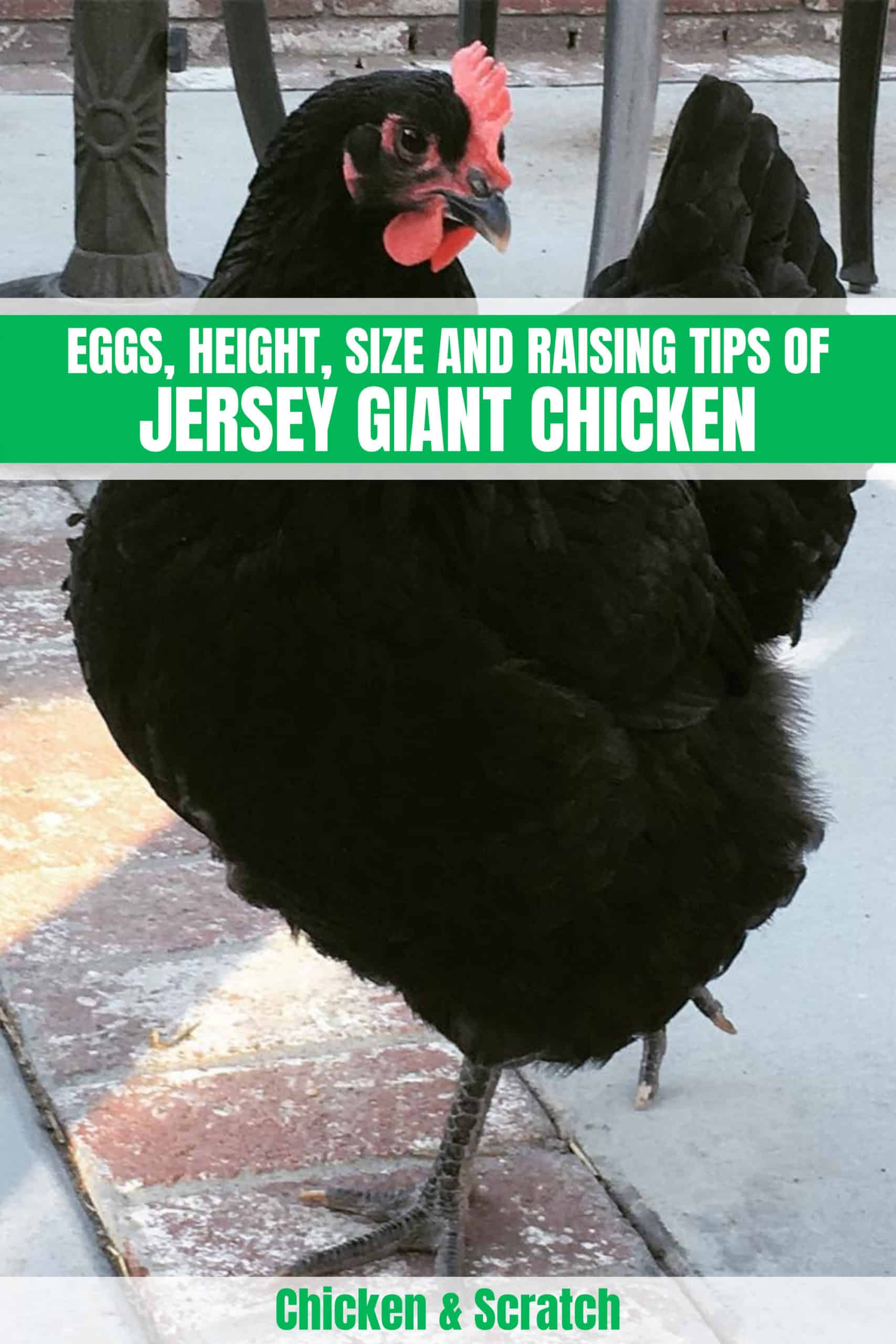
Jersey Giant Overview
| Size | Very Large |
| Body Shape | Broad |
| Country of Origin | United States |
| Weight | 11 lbs. (Hen)
13-15 lbs. (Rooster) |
| Lifespan | 8-10 years |
| Breed Standard | APA |
| Temperament | Calm and Docile |
| Feather Color | Black, White, and Blue |
| Best suited for | Dual-Purpose (Meat and Eggs) |
If you searched for the most giant chicken breeds, there is no doubt that you already encountered the Jersey Giant!
This chicken breed is one of the largest domesticated bird species originating from New Jersey, USA. Despite being large, this breed is generally docile and calm yet sometimes acts bossy within peaceful group settings.
Since the poultry industry has various shifts occurring across livestock keeping; With people looking into organic and sustainable agriculture, Jersey Giants have become more popular as a dual-purpose chicken that offers good production in both areas.
On the meat side of things, their huge size makes them an economical choice for commercial poultry farms or small-scale roasters alike. In contrast, their eggs, while smaller per clutch, are larger than other dual-purpose breeds.
That said, Jersey Giants are also familiar stars on the show bird runway. Featuring dark feathers and a big body, they are surely a stopper for any judges.
Background and History of Jersey Giant Chickens
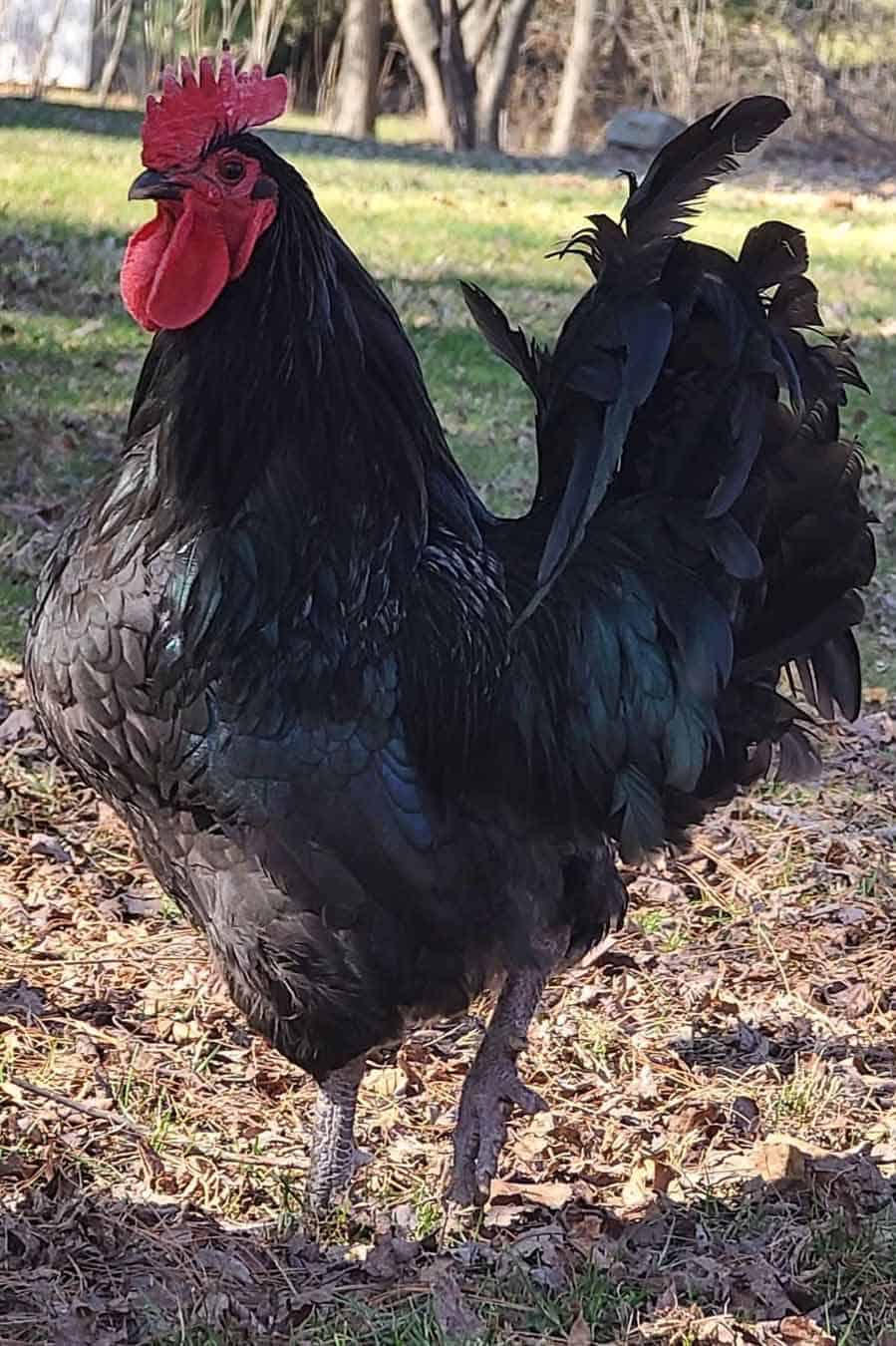
The Jersey Giant is the largest chicken breed in the United States and one of the largest in the world. Initially, the breed was created as a possible replacement for turkeys.
Some chicken owners thought they would supply the demand for large roasting birds if they bred chickens large enough. For some time, Jersey Giant chickens were primarily meat birds.
However, because a Jersey Giant chicken takes eight to nine months to reach its full size, which is much longer than most chicken breeds, and because turkey became more readily available, the demand for the Jersey Giant as a roasting fowl died down.
Today, the breed is generally used as egg layers or exciting additions to a flock. Because the demand for it died down so much, it was at one point in the early 2000s considered to be a critically endangered breed. Since 2017, the breed has grown and is only on the watch list for endangered chicken breeds.
The breed originated in New Jersey in the late 1800s and was cultivated mainly by Thomas and John Black. To create the large chicken breed, the farmers bred together Black Langshan chickens, Dark Brahmas, and Black Javas.
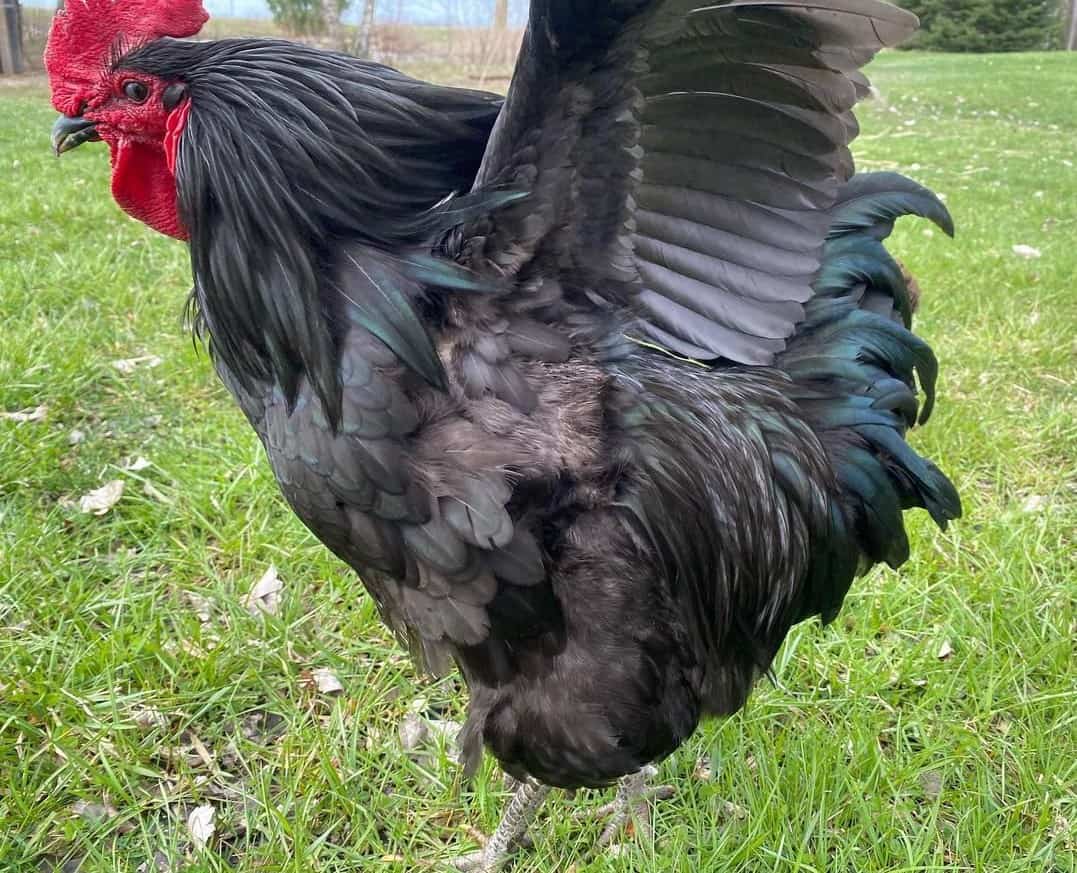
Initially, the breed was known as the Black Jersey Giant chicken. However, this name was given to them not because of their dark coloring but because of the last name of the farmers who created the breed.
The original creators of the breed were unconcerned with the bird’s color, so the Jersey giant ended up with various feather variations. Today, the Jersey Giant chicken is recognized by the American Poultry Association as having three colorations.
The original black breed standard was recognized in 1922. In 1947, a white variety was added to the breed standard. Then, the blue type in 2002.
Although Jersey giant chickens are still much larger than many other chicken breeds, they have decreased slightly since their conception.
Jersey Giant Chicken Breed Standard
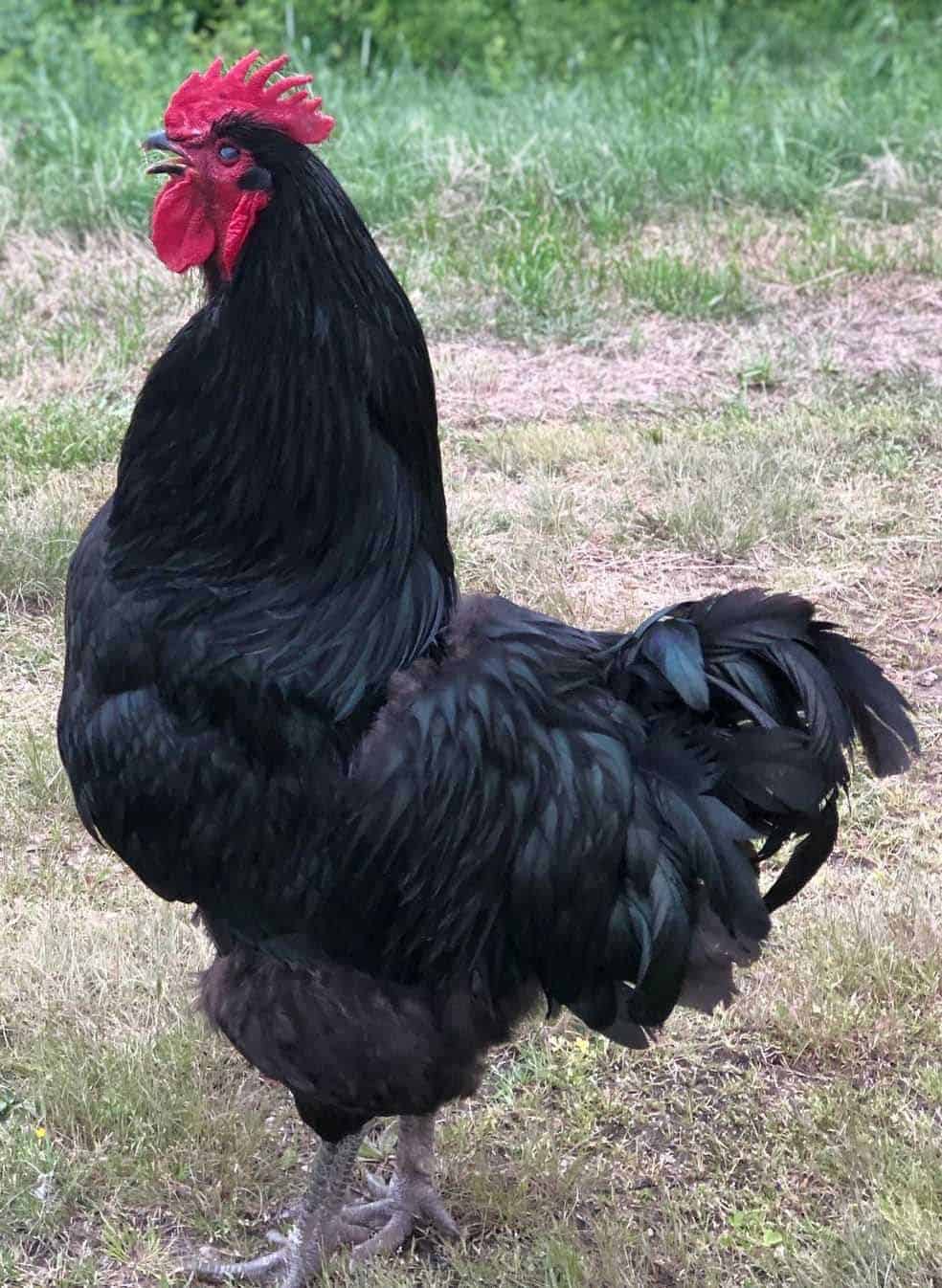
Originally, the breed standard for a Jersey Giant chicken was a large frame, yellow skin, and a single comb. Jersey Giant chickens today are somewhat smaller than their ancestors, but they are still enormous birds.
According to the USDA standard, Males can weigh between 13 and 15 pounds and usually stand between 22 and 26 inches tall. Females weigh about 11 pounds and stand between 16 and 20 inches tall.
Jersey Giant Appearance
As the name suggests, Black Jersey Giant chickens are black. It includes both the feathers and the legs. Their feathers have an iridescent green or purple sheen to them in sunlight.
A White Jersey Giant chicken has white feathers and cream or willow-colored legs. Blue Jersey giants have darker, nearly black shanks and are grayish-blue.
All Jersey Giant chickens still have the yellow skin described in the original breed standard. They also all have red wattles and combs. These chickens have brown eyes. Depending on the feather coloring, the birds’ beaks should be pale yellow or black.
The Jersey Giant chicken has a muscular body and feathers that lie close, so the bird has a neat, clean appearance. There are no feathers on the legs. In addition, the tail of the chicken is relatively short.
Personality and Temperament
Aside from its impressive size, the Jersey Giant chicken is often sought after because it is so friendly and docile. Many people keep them simply because they are excellent backyard or barnyard pets. These chickens are also considered relatively calm and generally unruffled by disturbances.
Because of their gentle temperament, these chickens are thought to be a good choice when choosing a bird that will share space with pets or children. They also work well as an addition to established flocks as they tend to get along well with other chickens and do not peck often.
Their large size can make them seem quite imposing, but they usually do not use that size to intimidate other animals. In actuality, they are a non-aggressive breed.
Despite the fact that they are not feisty, Jersey Giant chickens often work well with chicken breeds that are aggressive due to their intimidating size. Most chickens prefer to stay out of the Jersey Giant’s way. Further, hawks do not prey on Jersey giant chickens, as the chickens are simply too large for a hawk to carry away.
Jersey Giant Chicken Egg Laying Capabilities
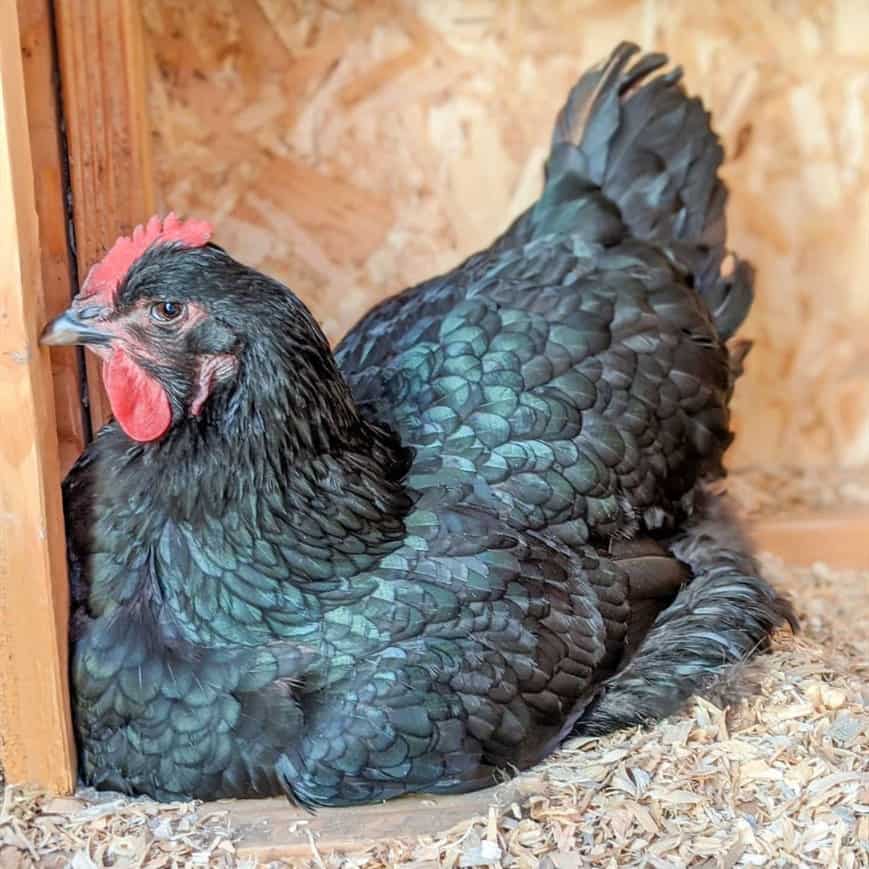
- Egg Production (per week):2-4 Eggs
- Egg Color: Brown
- Egg Size: Very Large
According to The Livestock Conservancy, Jersey Giant chickens tend to lay more eggs than other large breeds. Although they were bred to be meat chickens, these birds are actually considered to be reasonably good egg layers.
They will produce, on average, between two and four eggs each week, for a total of between 150 and 200 eggs a year.
The eggs themselves are light or medium brown in color. They tend to be quite a bit larger than the average chicken egg, which is to be expected given the size of the Jersey giant.
Jersey Giant hens are often considered to be good mothers to their chicks, and they seem to enjoy taking care of their eggs. However, because of the size of the chicken, if left to brood the eggs, Jersey Giant hens often accidentally crack the eggshells with their weight.
Because of this, it is essential to remove eggs as soon as possible. If chicks are desired, the eggs can be placed under a hen of a different breed for brooding.
It takes slightly more time for Jersey Giant chicks to develop. Because of this, it takes chicks between two and six days longer to hatch than other chicken breeds.
Health Issues and Care

The Jersey Giant chicken was bred to be not only large but also robust. Because of this, Jersey giants are considered healthy birds that are not susceptible to many illnesses.
One of the only potential health issues Jersey Giant chickens face is leg injuries. These injuries can occur when the bird flies or jumps from a high space. Due to their weight, the landing can injure a bird. Placing perches closer to the ground can reduce the risk of such injuries.
Due to their size, Jersey Giant chickens require much space to roam. Allowing these birds to roam freely is often the best option.
However, if free-ranging chickens are not an option, they should ideally be offered eight square feet of space per chicken. However, in tighter areas, four square feet of space is adequate.
The Jersey Giant chicken can eat a staple diet similar to other chickens but will obviously require more food. They are also good at foraging for themselves when they are allowed to roam free.
3 Tips for Raising Jersey Giant Chickens
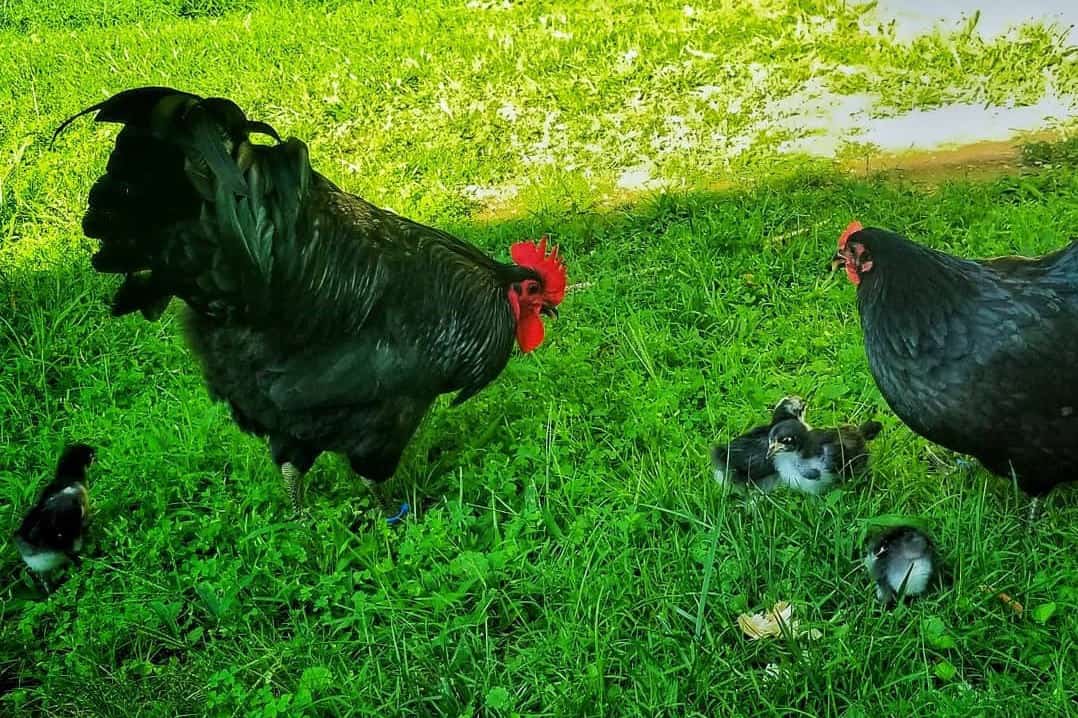
Excellent Cold Weather Birds
Jersey Giant chickens have feathers that lie tight to their bodies. This, combined with their robust structure and overall vigorous health, means that they are hardy birds.
These chickens do exceptionally well in cold weather climates. However, they may not fare as well in hot weather climates.
Give Vitamins and Minerals to Help Develop their Size
These chickens must receive an adequate supply of vitamins and minerals. This can help the chicken reach its full growth potential. It can also help the chickens grow stronger bones, which can help to reduce the risk of potential leg injuries.
Adding vitamins and minerals to the chicken’s food is an excellent way to ensure the bird receives the proper diet. However, allowing Jersey giant chickens to roam free and forage also helps.
When foraging, chickens have a more varied diet and generally take in more vitamins than they would from standard feed alone.
Perches Must be Placed Low to the Ground
When creating a space for Jersey giant chickens, it is essential to remember that their perches should be placed low to the ground. This not only assures that the chickens can easily reach the perches, but it also helps reduce leg injuries caused by the Jersey giant’s weight.
Summary
For many, the Jersey giant chicken is an excellent addition to a flock. Although it can take some time to mature, many praise the bird for its meat. Others enjoy a gentle, friendly personality and good egg-laying temperament. Either way, Jersey Giants are a popular choice for many chicken enthusiasts.

Joseph Hudson has been raising chickens for over 15 years. In 2018, he completed the Agriculture & Natural Resources program at Mt. San Antonio College. He currently raises over 1400 chickens on his 7.5-hectare farm. He keeps sharing his experience on raising healthy and happy chickens on Chicken Scratch The Foundry.







I aminterested to farm with these children in Pinetown ( Jersey Big Black) where to get them
I got mine from tractor supply. If you don’t live near one you can order them online, the hatchery tractor supply uses has a direct link on tractor supplied website. There is also tons of hatchery websites you can order from online. Your local post office calls u when they arrive and they have
thanks for this article. I am in Cameroon. can you help me have Fertilised eggs of the jersey giant chicken? email [email protected].
Very good read , just got two black jersey giants hens 3 months old .
Never had any hope they do well look forward to more of your articles
Hello Linda! 😊
Thank you so much for your kind words! I’m absolutely thrilled to hear that you enjoyed the article on Jersey Giant Chickens. Congratulations on getting your two black Jersey Giant hens! They’re such a fantastic breed, and I’m sure they’ll bring you lots of joy and lovely eggs.
At 3 months old, your hens are still quite young, but as they grow, you’ll be able to fully appreciate their impressive size and stature. It’s always exciting to watch these gentle giants develop, and I’m confident they’ll do well under your care.
Stay tuned for more articles on raising chickens and other poultry-related topics. We’ll continue to provide helpful tips and information to support you on your chicken-raising journey. If you have any questions or need further assistance, please don’t hesitate to reach out. We’re here to help!
Once again, thank you for your support, and I wish you the very best with your new Jersey Giant hens! 🐓🥚🌟
I just picked up 2 chicks from TSC! Two pullets! Have I lost my mind? I have 3 hens. RIR, 7 yrs old and one Brahma, just laying and one Silver Laced Orphington ! All three are laying. The babies are in a plastic bin in the den! I raised my original flock the same way. I am worried about how old should the babies be when I introduce them to the big girls? The Brahma is a little bit broody. Should I see if she wants the babies?
It is generally recommended to do so when the chicks are around 6-8 weeks old, when they’re fully feathered and able to regulate their own body temperature. However, even then, you need to be careful. It’s crucial to do it gradually to minimize any potential bullying from the older hens.
Dobrý den jsem z české republiky,chovám Žerzejské obry. Poptávám nového kohouta nebo slepička do chovu.